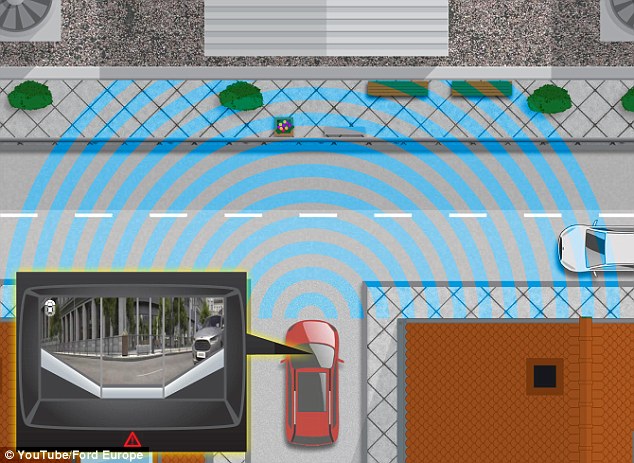
Yes you read that correctly. A camera that can see around corners. With the introduction of self parking cars, rear view cameras, lane assistance cameras, self driving cars and all of the other new technology in cars today, it is no surprise that there will soon be an option for cars to see around corners. This technology would help people see around blind corners and would warn of obstacles that otherwise would be out of sight and ultimately aid in reducing driver stress and potentially averting accidents.
The split-view camera will be offered in the Ford Edge and Explorer later this year and will be located in the front grill of the car. It will display a 180-degree 1MP video camera. A representative from Ford said "The new camera system can take the stress out of blind intersections and other situations with reduced visibility." Whether your view is obstructed by a poorly parked car, or other obstructions, you will now be able to make a driving decision based off of what you can see on your dashboard. It even features a jet washer to keep the camera lens clean to be sure that maximum visibility is available at all times.
Studies say that drivers involved in one in five accidents happen at a place where the drivers view is in some way obstructed. With the press of a button approaching vehicles, cyclists and pedestrians will be shown on a monitor in the dashboard. A camera in the front grill will allow drivers to see a real-time 180 degree view, both left and right on the vehicles 8-inch color touchscreen. Currently the best approach to see around blind corners or other obstructed areas is to lean forward to get the best view while slowly moving forward and listening for any oncoming traffic. The problem with this is with bikers since they typically don't make much sound while approaching. This new system adds to the existing rear-view backup cameras on the Ford Edge and Explorer.
Ford plans to make rear-view cameras standard on all its North American cars by 2018 and front cameras available on most of its cars globally by 2020.
 Yes you read that correctly. A camera that can see around corners. With the introduction of self parking cars, rear view cameras, lane assistance cameras, self driving cars and all of the other new technology in cars today, it is no surprise that there will soon be an option for cars to see around corners. This technology would help people see around blind corners and would warn of obstacles that otherwise would be out of sight and ultimately aid in reducing driver stress and potentially averting accidents.
Yes you read that correctly. A camera that can see around corners. With the introduction of self parking cars, rear view cameras, lane assistance cameras, self driving cars and all of the other new technology in cars today, it is no surprise that there will soon be an option for cars to see around corners. This technology would help people see around blind corners and would warn of obstacles that otherwise would be out of sight and ultimately aid in reducing driver stress and potentially averting accidents. Yes you read that correctly. A camera that can see around corners. With the introduction of self parking cars, rear view cameras, lane assistance cameras, self driving cars and all of the other new technology in cars today, it is no surprise that there will soon be an option for cars to see around corners. This technology would help people see around blind corners and would warn of obstacles that otherwise would be out of sight and ultimately aid in reducing driver stress and potentially averting accidents.
Yes you read that correctly. A camera that can see around corners. With the introduction of self parking cars, rear view cameras, lane assistance cameras, self driving cars and all of the other new technology in cars today, it is no surprise that there will soon be an option for cars to see around corners. This technology would help people see around blind corners and would warn of obstacles that otherwise would be out of sight and ultimately aid in reducing driver stress and potentially averting accidents.